Part III: The Flight
I woke up at 4 AM, having gone to bed at 8 PM the night prior, and with the excitement of what was ahead, there was no way I was going to get back to sleep. I knew that beginning my day by having coffee with my wife was the best bet for any sense of normalcy. I was equal parts excited, nervous, and scared shitless.
Being the day we had scripted for so long, I did exactly as planned. I threw on my Neil deGrasse Tyson T-shirt, shaved so that the airtight seal of the spacesuit would be at its firmest, and chugged as much water as I could. The idea behind all the hydration was to minimize the chance of a micro-stroke caused by the high altitude. I was determined to keep everything as seamless as possible.
Once the clock struck 6, we jumped in the car and headed to the base, blasting a mix of dubstep and metal to keep my anxiety at bay. While the flight wasn’t scheduled to liftoff until about 11, we began briefing at 7:30, as there was a lot of coordination to be done by the pilots. We would be flying a high-altitude formation with two U-2s — a feat never accomplished for a photoshoot. While it was critical to get the shot, the most important thing was to figure out a suitable communication method that allowed me to direct the second plane into position while also allowing the pilots to maintain a safe distance and speed.
Doing a photoshoot like this at the edge of space is entirely different than when I did the same thing with fighter jets. At these altitudes, there are only 5 knots of speed that separate the planes from going so fast they fall apart or going too slow that they fall out of the sky completely. For this reason, we had to use geometric turns to stagger the aircraft rather than having the second plane speed up or slow down, which was yet another complexity that made this photoshoot as challenging as it was.
We were off to get our spacesuits on after wrapping the meeting an hour and a half later. I tried my hardest to put on a brave face, but on the inside, I was shaking. Even with the fighter jet flights I’d done in the past, the sheer magnitude of this shoot had my nerves on a whole different level. I can still remember stepping into the room and seeing all the military uniforms ready to get three people suited up—something that very, very rarely happens. Based on their composure, you would never know how rare this situation was.
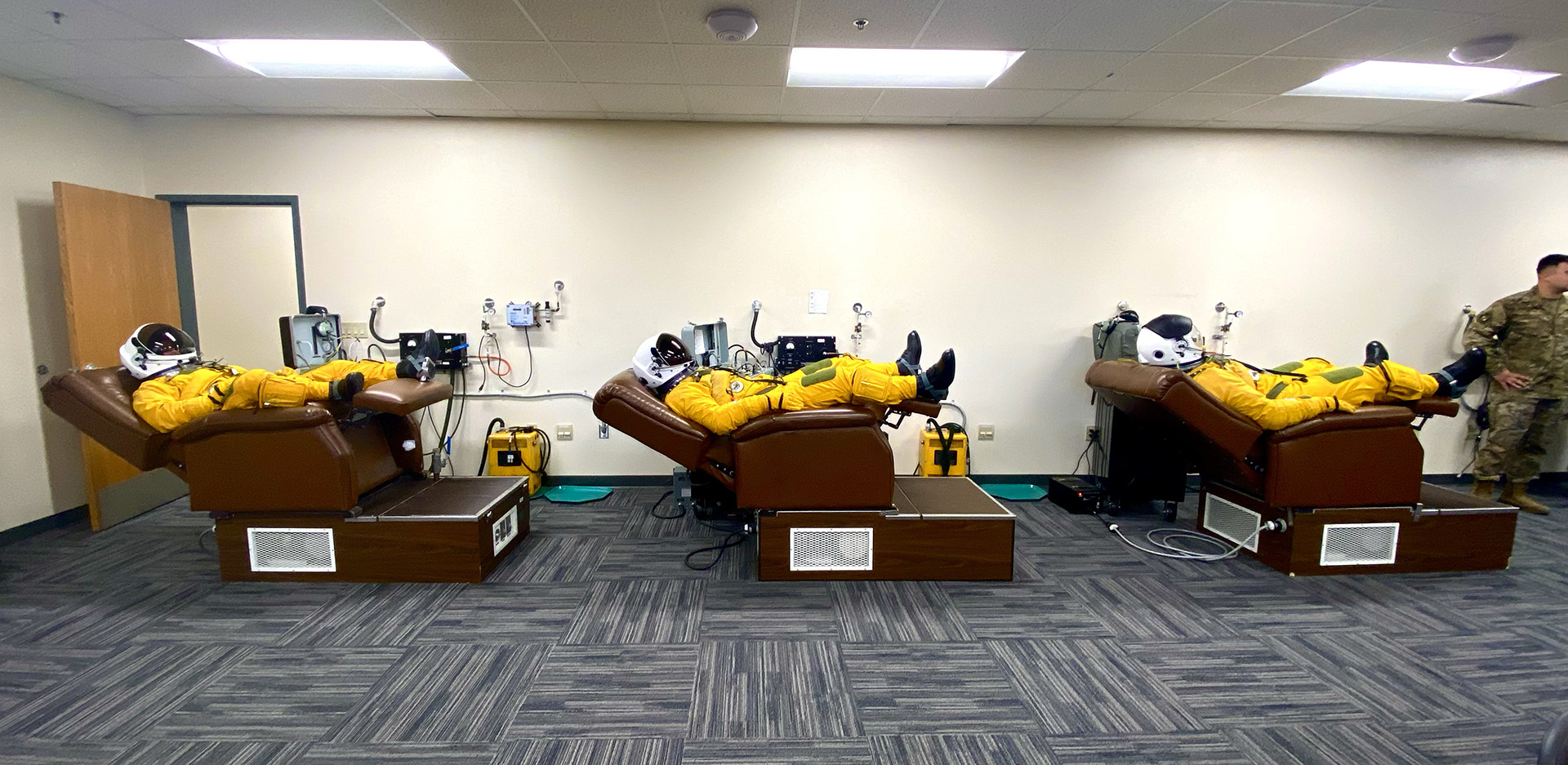
The overall process of getting into the spacesuit was similar to the previous day’s practice. However, we immediately had a challenge with the air seal in my helmet, requiring it to be removed and the parts replaced three times. Most people there asked if I was scared because of this. In all honesty, it was one of the most comforting parts of the lead-up that day. Every time they took my helmet off, someone would come over to me and tell me what they were doing and why they were doing it. I was comfortable and confident knowing that safety was their top priority. Once my helmet was fixed and my oxygen numbers were at the correct level, we had to sit in our chairs and breathe 100% oxygen for an hour. The intention with this is to eliminate as much nitrogen from your system as possible; this reduces the risk of getting the bends, or decompression sickness, on the ascent to higher altitude. For a brief moment, I sat with my visor down and laid back in the chair, eyes closed, taking a moment to breathe. It was the last rest I would get for a long time.
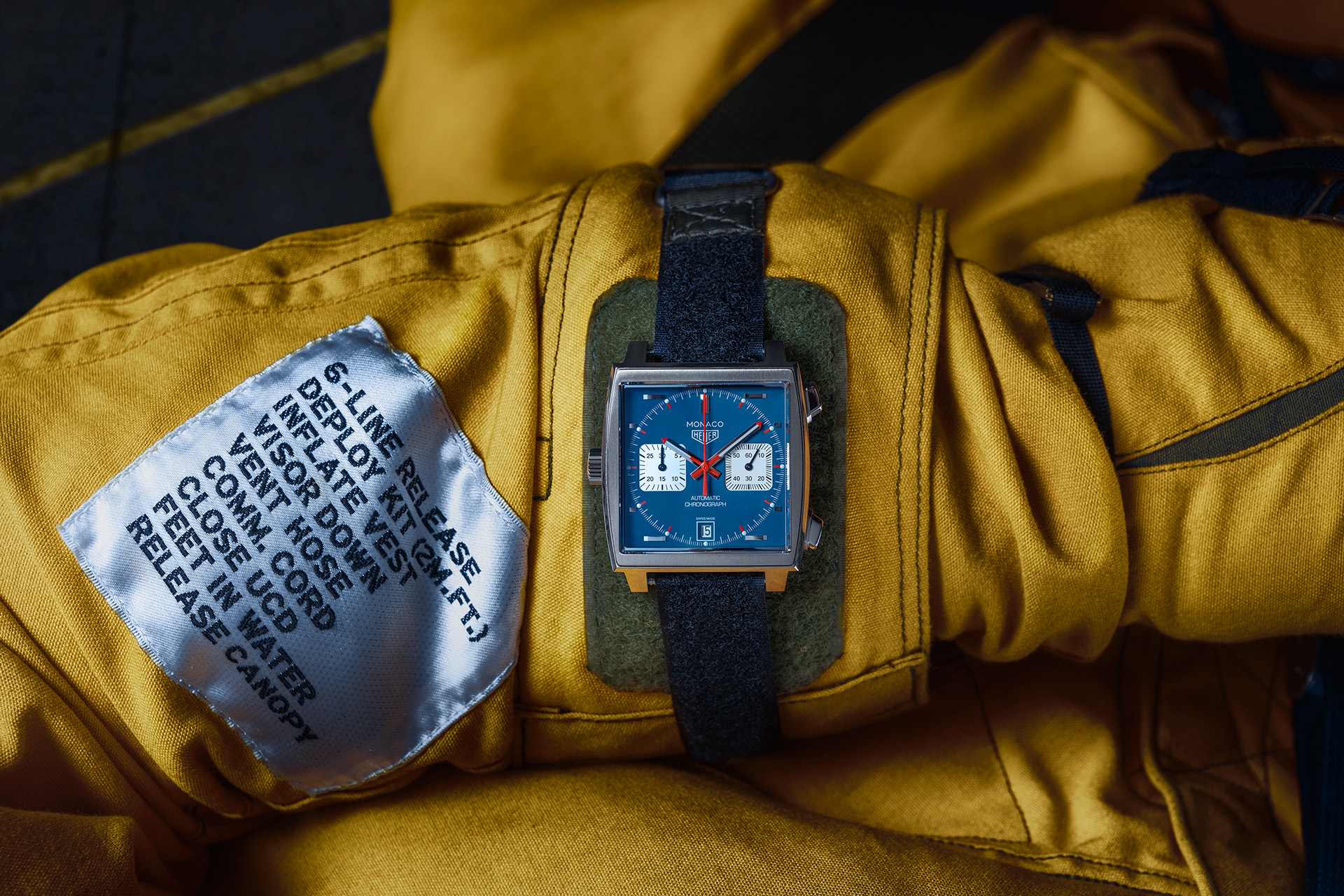
As we came closer to our step time, a suit division personnel came over with a space-strapped TAG Heuer Monaco watch that had just arrived from Switzerland the day before. After putting my watch on, the lady in charge of the suit squad put on a headset and pointed to a patch sewn onto my sleeve. It was the steps to take if I had to eject. In a very calm voice, she said, “Just so you know, the steps are right here, so you don’t need to worry about forgetting them.” It was one of the kindest moments in the whole process leading up to the flight, and it meant more to me than she knew.
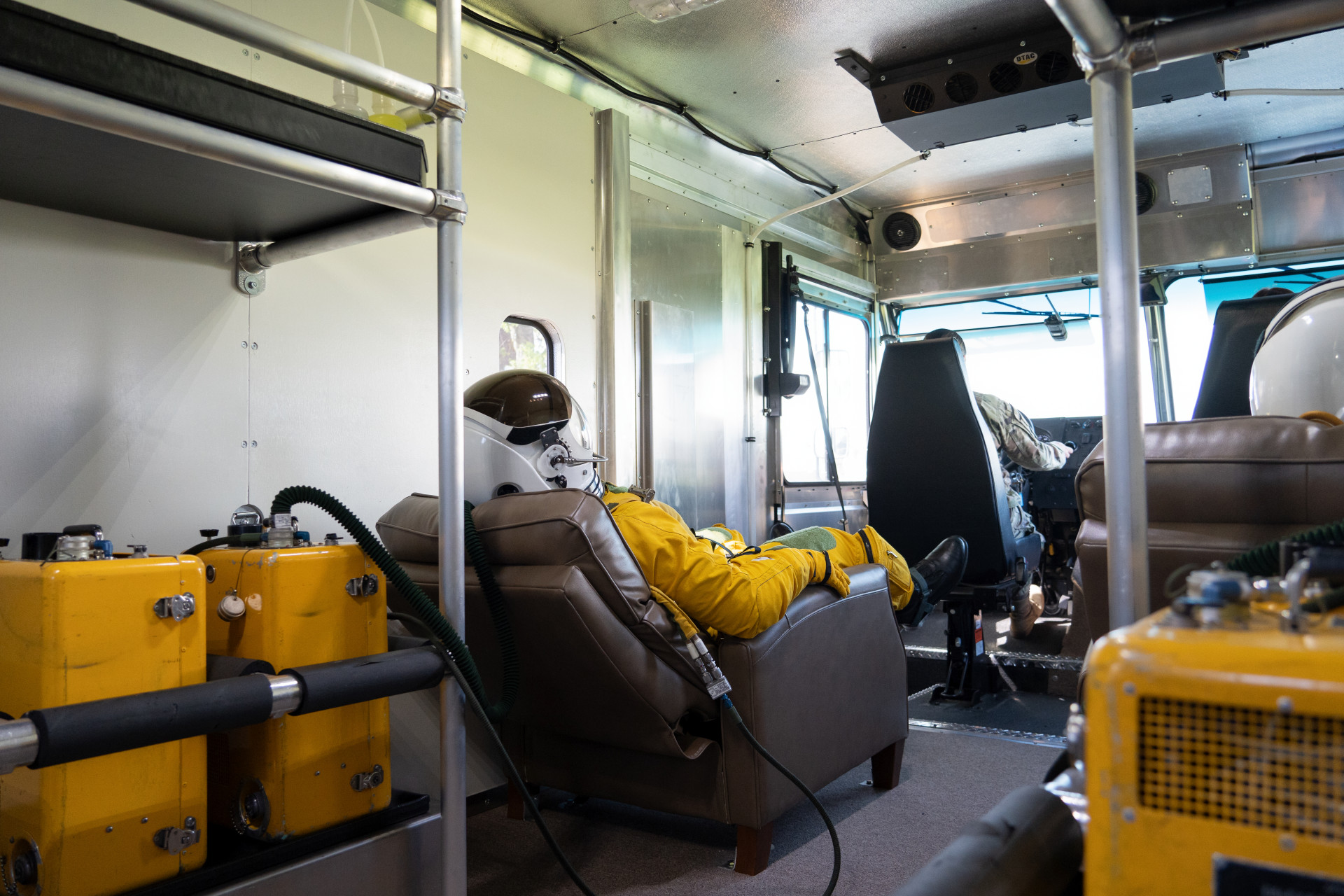
In what seemed like only a couple of minutes, a gentleman entered the room and told us that it was time to head to the planes. I was then hooked up to a portable life support tank that caused smoke vapors from the liquid oxygen—much like those you see on a photo set with special effects. My pilot and I walked to a box truck (lovingly known as a bread van), climbed into the La-Z-Boy seats in the back, and were driven to our plane. Much of the preparation process was a blur, as I was so focused on what I needed to do to get the shot.
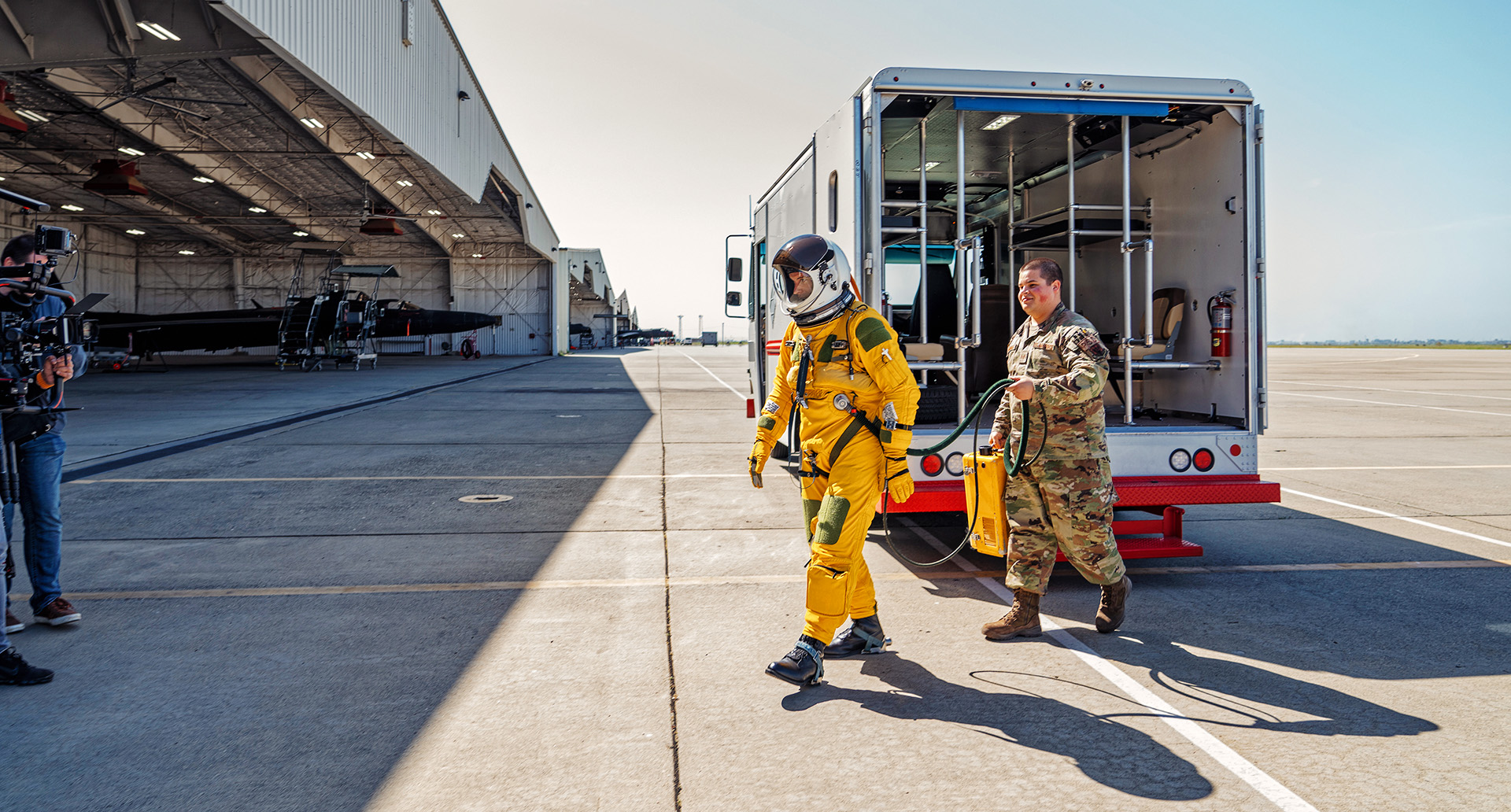
Once I was integrated into the plane, my friend brought over a box that contained every piece of camera gear I had brought. Even with six months of preparation and over 300 camera/lens combinations, we knew there was a chance that I would change everything at the last minute, and in many ways, I had. Even the day prior, I had swapped out the hero lens as I wanted to shoot a manual focus lens. After the gear was loaded into the plane, I thanked my friend, blew a kiss to my wife, and we fired up the engine.
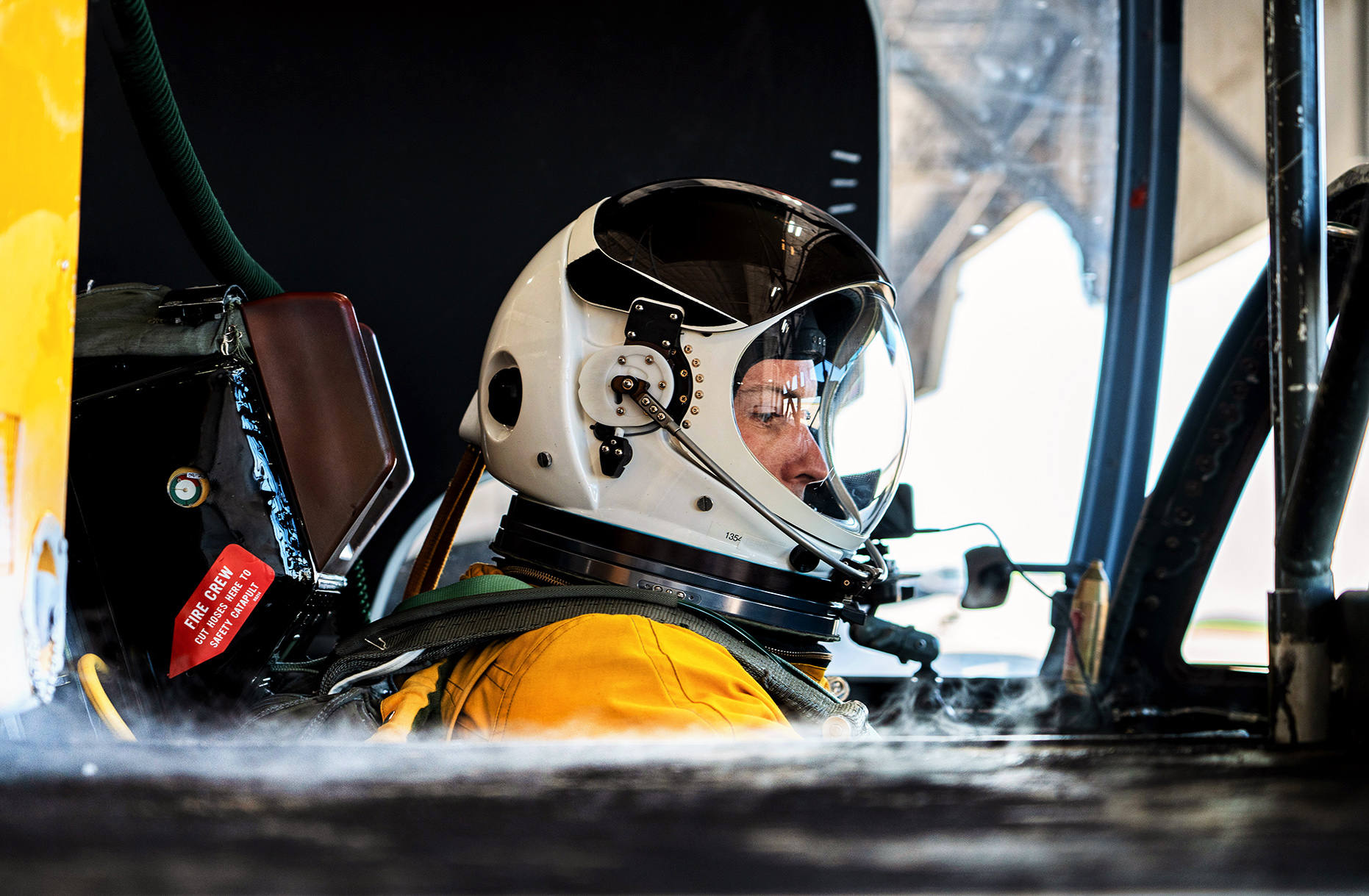
I remember glancing out the window to see all the chase cars following my plane while I sat in the back, rehearsing the schedule of events for the flight. At this point, I caught my first glimpse of the other U-2 as it taxied out in preparation for a rendezvous at the top of the Earth’s atmosphere. Its dark figure contrasted drastically against the bright blue of the morning, and I braced myself for the departure. We then began our taxi to the end of the runway, and while there, I followed my pilot’s orders to arm my ejection seat.
Before I knew it, my pilot radioed to ask me to give a thumbs up to the wingman in the chase car; as soon as I did, the engines roared, and in seconds we began to roll down the runway. I looked in the mirror and saw the wheel attachments drop off the wings as planned, and in less than 500 feet, we jetted off the ground heading straight up.
The takeoff is far less violent than one in a fighter jet and is quite peaceful in many ways. I took the time to take in my surroundings, the world getting smaller below us. Things soon became surreal as my pilot began calling out 10,000 feet, 20,000 feet, and 30,000 feet. Next, it was the top of Mount Everest, quickly followed by the maximum altitude of a commercial airliner. After that, every foot was my new record. I hadn’t realized how high we were until about 20 minutes into the flight when my pilot told me to look to my 9 o’clock, where we saw a commercial airliner flying at its max altitude—we were further above it than its distance from the Earth. The perspective was mesmerizing, and I took my camera out for a quick grab.
Not long after, we caught our first glimpse of the second U-2 and started flying patterns to draw it closer to us. As our altitude climbed higher, the second ship got closer, the bright blue of the atmosphere receding behind us as we propelled further into the darkness. For a moment, I panicked; I thought I had set the polarizer incorrectly on my camera, only to realize the reflections were caused by the ice taking over the jet I was photographing.
At this point, our altitude was well beyond the Armstrong line. This means that if we didn’t have spacesuits on and a decompression occurred, we would instantly boil from the lack of pressure, immediately followed by turning into ice cubes. I tried not to think about the grave possibilities that gripped my mind if just one thing went wrong.
After about 30 minutes of flying in formation with the other U-2, my pilot and I cut him loose. As the second jet soared away from us, we proceeded to climb to an even higher altitude. Things started to become difficult for me to process as I tried to wrap my mind around what I was witnessing. We live our lives with the concept that the daytime sky is bright and blue, yet as we leave the atmosphere behind us, it quickly becomes dark and void. In many ways, I had tried to mentally prepare for this and even had to convince myself that I would understand what it would be like once I got there. Friends and family had sent stories about William Shatner’s experience with the overview effect and the mental disruption he experienced when seeing Earth bowing against the edge of space. I couldn’t have anticipated what it would be like to actually live it.
The truth is, I’m writing this weeks after the event because it has taken me that long to process what I saw. When I pictured going to the edge of space, I imagined myself feeling at ease with the idea that I was closer to the stars, and somehow closer to those that have left us. This thought couldn’t be any further from the truth. When I got up there, I realized that all I’ve ever loved and ever will love was on the Earth glowing below me. Space felt empty and void of life. I had always imagined that the striking beauty of those lucky enough to experience the sight I was beholding was that of space itself. In truth, space is merely the platform to take in Earth’s natural splendor.
Not long after the sky had darkened, the sides of the horizon started to bend, as if the pressure of the darkness above had forced them downward. At that moment, I was witnessing the curvature of the Earth.
Leading up to this, I had often thought about how I might be emotionally impacted once I was able to take in the actual shape of our planet. I realized in this moment that I had to compartmentalize it; there is no way to wipe tears from your eyes in a spacesuit, and the last thing I needed to do was impair my ability to focus the camera. I allowed myself to take it in as much as I could, but as soon as I realized it was becoming too strong of an emotion, I diverted my attention to the project.
One of the biggest fears we had going into this was that of the canopy turning to ice. The pilots had been practicing ways to mitigate it as much as possible for me, which involved turning the chimneys (glorified air vents) in my cockpit to maximum heat. The other way to reduce this icing was to have a low heartbeat and respiration rate with little movement, as every exhalation causes moisture to develop in the cockpit. I was able to do so after much practice before the flight, and when the pilot called back to ask if I had ice on my canopy, saying that his was completely covered in ice, I genuinely thought he was joking with me. I had lost so much sleep over the idea of getting up to altitude only to be blinded by an iced-over canopy. There was so much relief knowing the preparations we had done for so many months had paid off.
Then, without warning, disaster struck. The altitude had killed the LCD on my primary camera. To add to this complication, I couldn’t use the viewfinder with the fishbowl that was my helmet on my head. The big question was whether the camera was dead or just the LCD. I had practiced taking apart a camera with ski gloves on prior to the flight and knew I could replace a battery grip but not remove a battery. With this practice in mind, I removed the grip and restarted the camera, but to no avail. I then found the softest part of the suit where I could feel the camera clearest. I pressed the camera body against it and fired the shutter. I realized at that moment that the camera was still working and that, most likely, the files were still recording. Instead of moving to a backup body, I decided to return to the basics of photography I learned many years before.
I knew my exposure value for the sun on the Earth was 15.6 to 16.4 EV. From there, I did the math in my head, knowing what the last shutter speed set on the camera was. I dialed the exposure within the safe range for the sensor, which was about +/- 2 stops of dynamic range. In a bit of serendipity, I decided to take a manual focus lens that had a very clear scale on it. I focused it by approximating distance, which was usually infinity for shots of Earth. During our ascent, I wanted to create an image of the cockpit while the plane was orbiting at 70,000 feet. To do this, I stuck my hand out and measured the distance from the position of the camera to the dashboard. We circled the plane until the light hit it just right, and I fired the shutter. The idea of losing the ability to see images might be scary to some, especially when in space. However, I was comforted by it in the moment, as it diverted my mind from the darkness around me and re-centered it on what I love most: creating images.
It only felt like minutes, but in reality, we had been up there for several hours. The pilot called over the radio to me and said we were going to start our descent. What is amazing about the U-2 is that because it has such large wings, we had to put our landing gear down while we were still above 70,000 feet in order to help the plane to return back to Earth. As we started descending, I finally allowed myself to rest. What is ironic is that as soon as I did, my canopy started icing over from right to left. I laughed as it was the first time I could be OK with the ice encroaching my view, and if anything, it gave me a reason to pause, taking in the sight of the Earth one last time before we folded back into the atmosphere’s grasp.
Returning home from this journey was different than any flight I’ve ever done. I had a new respect for what home was, and even though I was only gone for a little while, I had missed it dearly. We had to do several touch-and-goes and flybys before landing so the camera teams could get the footage they wanted. At each one, I found myself looking through all the windows in an effort to see my wife. After what seemed like the fourth or fifth pass, we finally touched down for good. With the help of the ground teams reattaching the wheels to the wings, we taxied to a hangar where a cheering crowd was waiting to welcome us—many of which had done so much to make this flight happen.
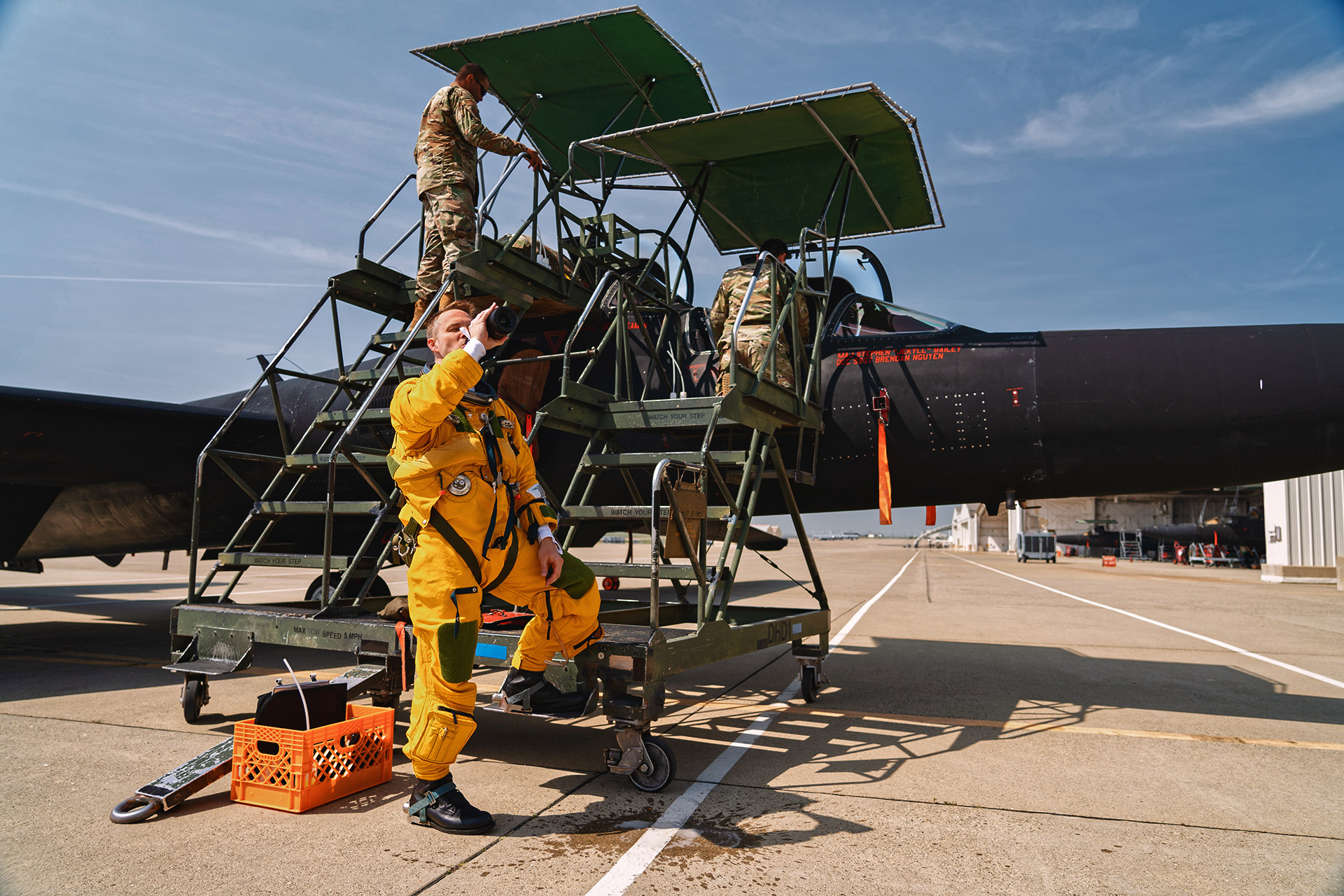
As with tradition, as soon as I stepped back onto Earth, they handed me a bottle of champagne and we began celebrating. Everyone wanted to ask questions about the flight, and all I wanted to do was thank them for their support. The truth is, it would be weeks before I could begin to comprehend what I had seen and been a part of. I’ll forever be humbled by the opportunity and the trust of those around me to do this photoshoot, and I’m honored by the effort it took to bring these images to life. It was truly the journey of a lifetime.
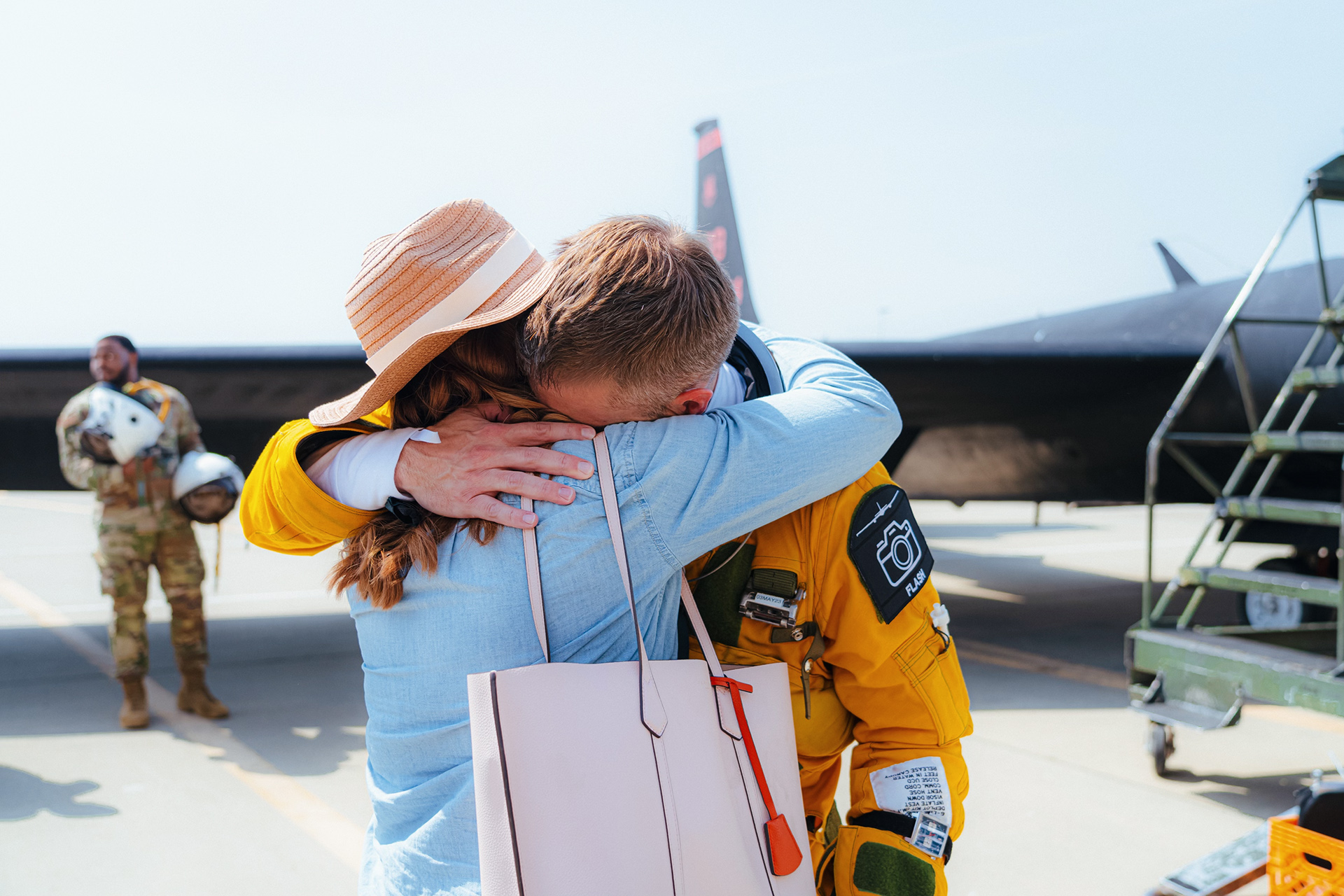



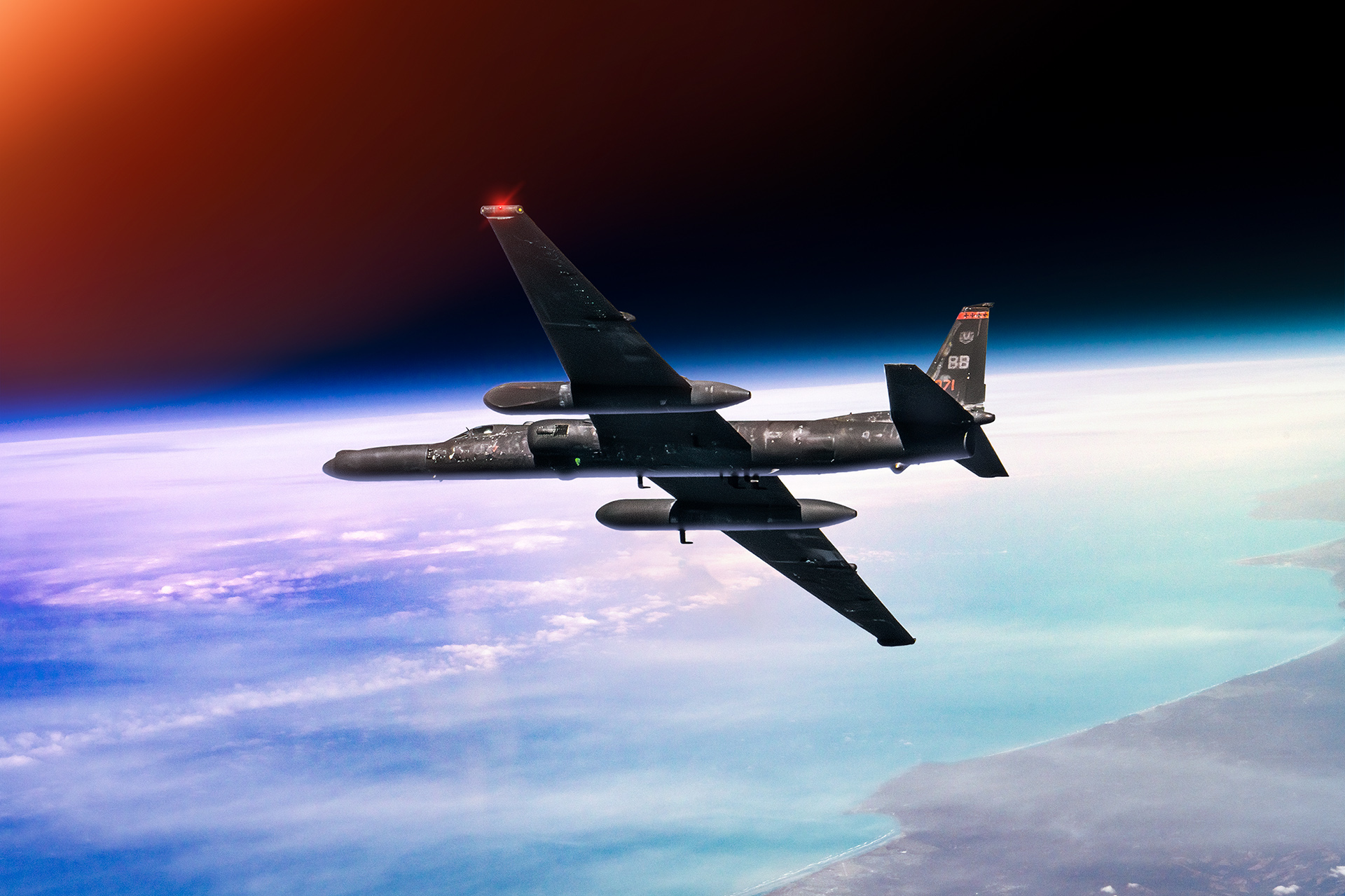

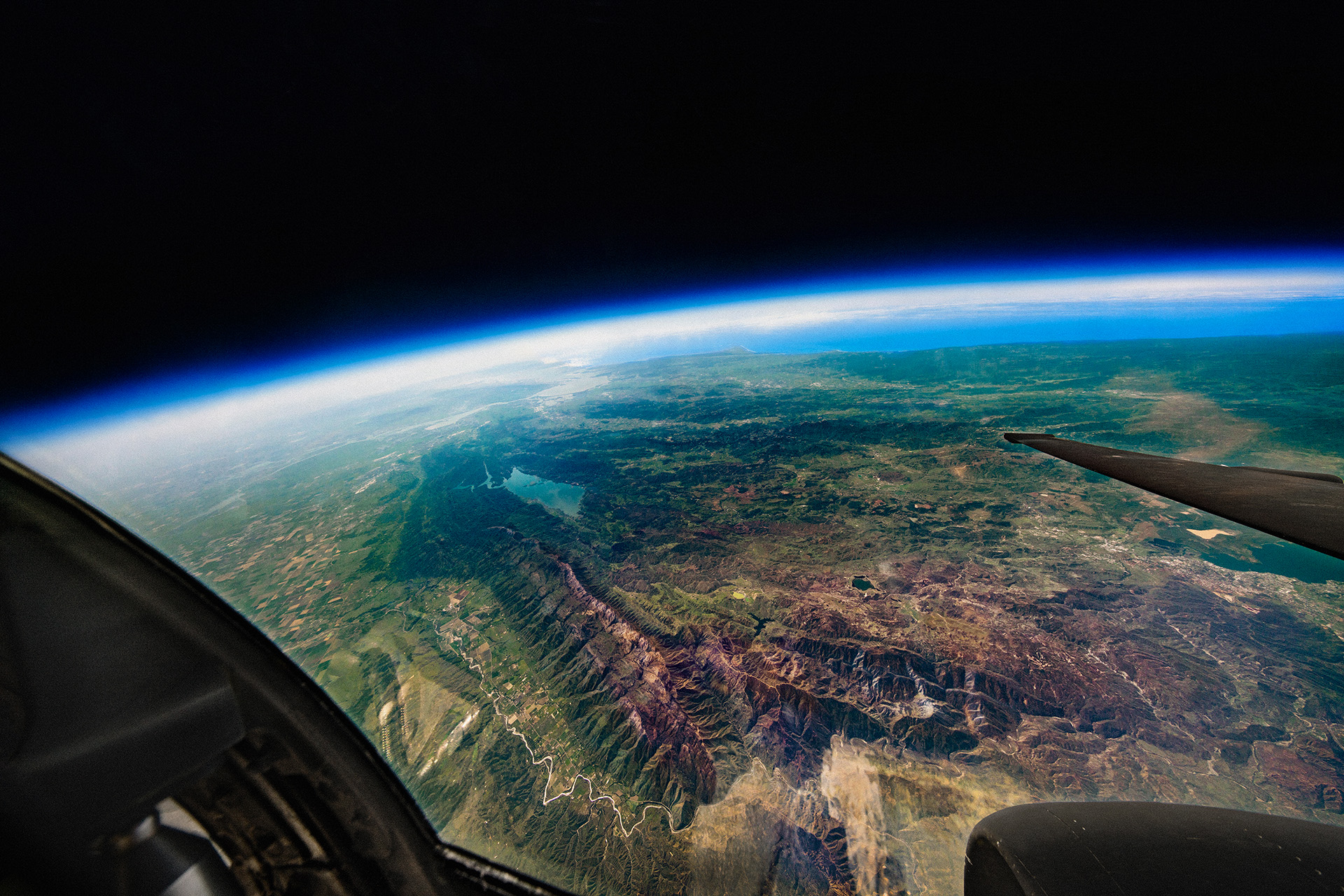

My favorite thing you said:
“In truth, space is merely the platform to take in Earth’s natural splendor.”
My favorite photo, though ALL are so incredibly phenomenal, is the TAG Heuer Monaco timepiece with the ejection instructions. I don’t know exactly why, but it seemed like with those two items, you were absolutely safe.
Thank you for sharing this beautiful journey! I caught a glimpse of your interview today, September 3rd, on FOX Live and your excitement led me to your story. I will keep following, you keep flying high!!
Wow man. That was an incredible opportunity and you an absolutely nailed it. I think I’d be exactly like you, borderline overwhelmed. Great job on controlling it, I’d imagine it would be really easy to lose it up there!
Fabulous work!
Hey Blair!
That’s spectacular…well done! The images are sublime as well. I’m sure you’ve made a lot of aviation photographers jealous!
What to do for an encore?
John
I have no idea what the encore is. I sincerely just want to keep helping people tell the stories that I find so fascinating.
What camera/lens combo was finally settled on?
Great stuff. Tons of work. Thank you, for sharing.
I actually took three cameras and three lenses up. 2 x Sony A7RV’s and a Nikon Z7 II.
Dear Blair,
I have the privilege to call some astronauts friend, each with a unique viewpoint from their time above the Earth’s. However, your perspective resonated with me in a way that made the abstract concept of the “overview effect” feel incredibly tangible and intimate.
Your journey and experience bring this transformative sensation much closer to home, allowing those of us who are Earth-bound to understand the world in a new light. Your story is far more relatable, bridging the gap between the seemingly unattainable space experience and the everyday lives of people like me.
Thank you for so eloquently sharing your unique viewpoint. It’s been truly mind-expanding to grasp our planet’s place in the cosmos through your eyes.
Ad Astra